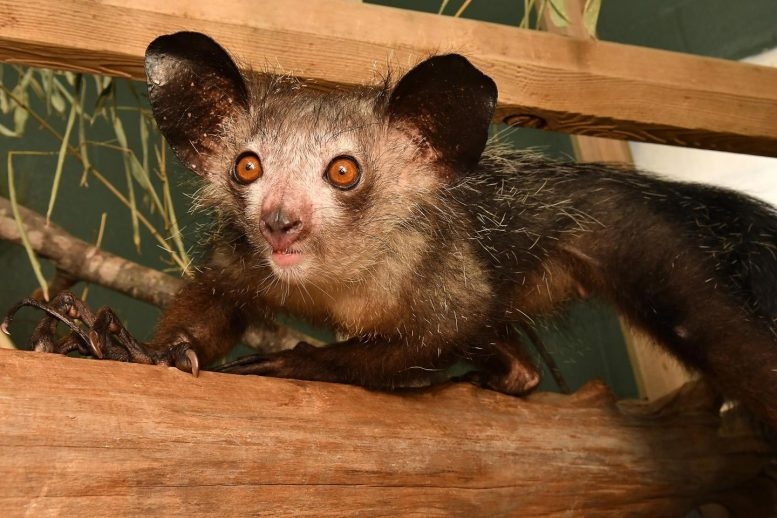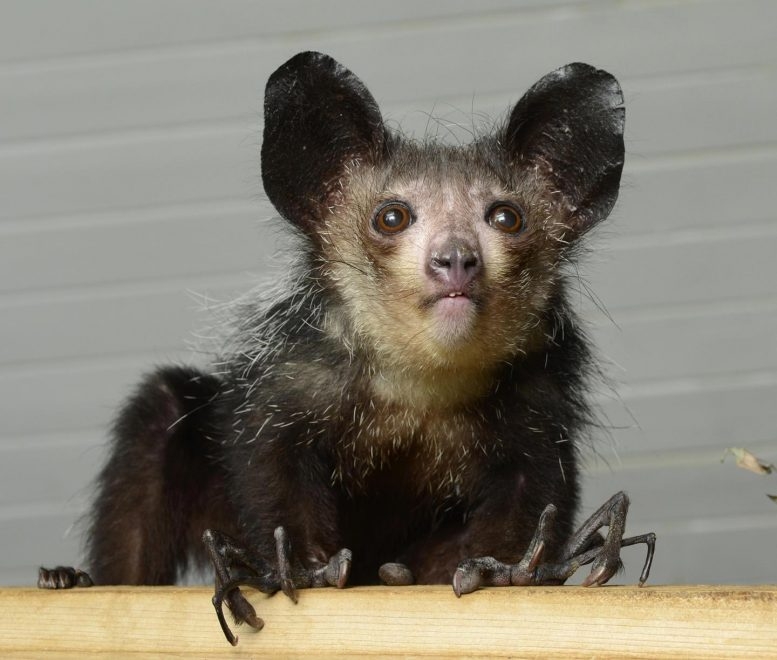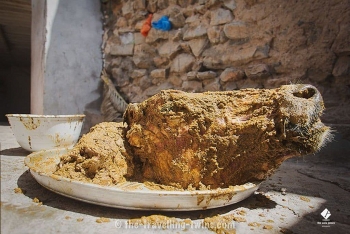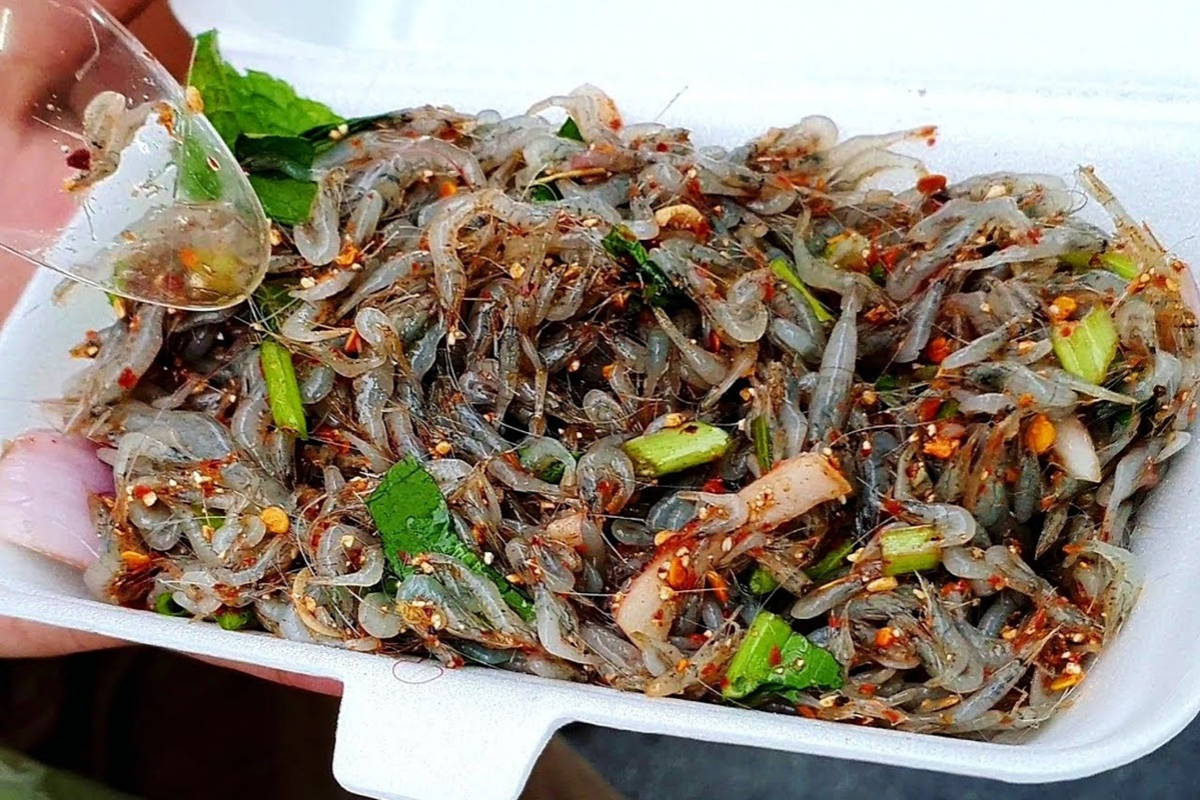What is Aye-aye - Strangest Animal In The World
 Goliath - the Biggest Frog in the World Goliath - the Biggest Frog in the World |
 Top 10 Strongest Animals in The World Top 10 Strongest Animals in The World |
 |
| Aye-aye - The Strangest Animal In The World - Photo: scitechdaily |
The largest nocturnal primate in the world is a lemur native to the island of Madagascar called the aye-aye (Daubentonia madagascariensis). They are solitary beings that spend their days sleeping in the branches and their nights scavenging for food.
The aye-aye's middle finger, which it uses to tap on trees to find grubs under the bark, is its most peculiar feature. Percussive foraging is the term for the way aye-aye locate hollow areas in the trees by listening for echoes. Once it has located a hollow area of a tree, an animal will gnaw into the bark and use its middle finger to probe the interior of the tree for grubs and insects.
The aye-aye's finger is an astonishingly narrow adaptation that enables it to occupy a limited ecological niche and only compete with other aye-ayes for the grubs and insects in trees. The aye-aye is an omnivore because, in addition to eating insects, it can also be found eating seeds, fungi, and fruits. In this lesson, you can discover more about animal adaptations.
The discovery of a tiny extra digit has made the world's weirdest little primate even stranger. According to a study conducted by scientists at North Carolina State University, aye-ayes have tiny "pseudothumbs" that feature their own fingerprints and may be used to grasp branches and other objects as they move through trees. This is a primate's first accessory digit to ever be discovered.
Adam Hartstone-Rose, associate professor of biological sciences at NC State and lead author of a paper describing the work, claims that the aye-aye has the most unusual hand of any primate. Their fingers have become so highly specialized through evolution that they aren't much use for navigating through trees. They move in a manner that resembles a strange lemur walking on spiders.
 |
| Aye-aye - Photo: scitechdaily |
NC and Hartstone-Rose When studying the tendons that connect to the aye-aye's unusual hands, Edwin Dickinson, a state post-doctoral researcher, noticed that one of the tendons split off toward a small structure on the wrist. On six aye-ayes, the researchers used conventional dissection digital imaging techniques to discover that the questioned structure is made of both bone and cartilage and has musculature that permits it to move in three directions, much like a human thumb does.
The digital model of the anatomy was created by Dickinson, who is also a co-first author of the paper and says, "Using these digital techniques, we are able to visualize these structures in three dimensions and to understand the organization of the muscles which provide movement to the digit."
According to Hartstone-Rose, "the pseudothumb is definitely more than just a nub." It moves with the help of three different muscles and has both a bone and cartilaginous extension. The pseudothumb has the ability to move through space and apply pressure that is nearly equal to half the body weight of an aye-aye. Therefore, it would be very helpful for gripping.
The team looked at specimens of aye-aye from both sexes that ranged in age from juvenile to adult, and they discovered the same structure in both the left and right hands of each one.
The pseudothumb may have evolved in the aye-aye to make up for its other overly specialized fingers, claim Hartstone-Rose and Dickinson.
"Other species, like the panda bear, have developed the same extra digit to aid in gripping because the standard bear paw is too generalized to allow the dexterity necessary for grasping," Hartstone-Rose claims. Additionally, moles and a few extinct swimming reptiles have widened their hands to allow for more effective digging or swimming. According to scitechdaily, this is because the aye-aye's hand is so tailored for foraging that an additional digit for mobility became necessary.
Other species of primates have shortened digits to help with locomotion. The aye-aye is the first primate to dial up numbers in the hand as opposed to down numbers. And it's incredible that nobody has ever noticed it before despite the fact that it has always existed in this peculiar primate.
| Sadly, this rare primate is categorized as "threatened" on the Red List maintained by the International Union for the Conservation of Nature. The local populace views aye-ayes as unlucky and a sign of death, and they frequently kill or poach aye-ayes when they see them. According to aaas, complex conservation situations like these require collaboration between numerous experts on science and human rights issues. |
 9 Weirdest Restaurants in the World you should definitely try 9 Weirdest Restaurants in the World you should definitely try It is wonderful to spend time eating dinner at a luxurious restaurant; however, sometimes, experiencing odddities is a good way to get your eyes open ... |
 Ox head (shuwa), one of world's weirdest dishes Ox head (shuwa), one of world's weirdest dishes The best way to explore culture of one are is to immerse in regional foods. Besides mouth - watering dishes that wow tourists, the pelicular ... |
 World's Most Bizarre Food: Goong ten from Thailand World's Most Bizarre Food: Goong ten from Thailand The street vendors in Thailand "upgrade" the raw shrimp food into a more fun version called Goong ten, which means clam dancing. Scroll on to ... |























